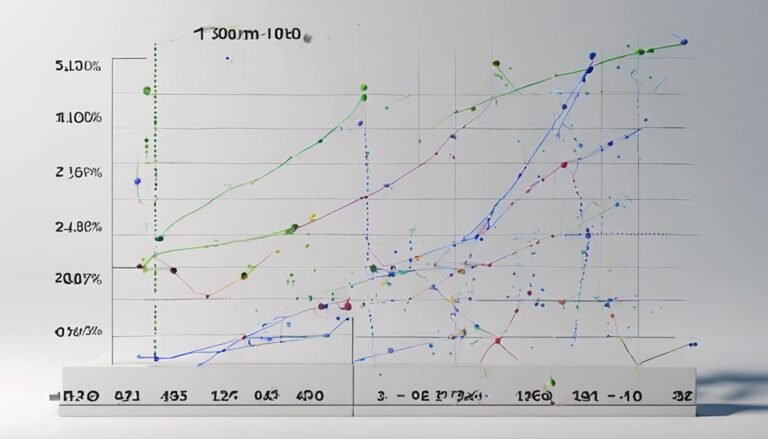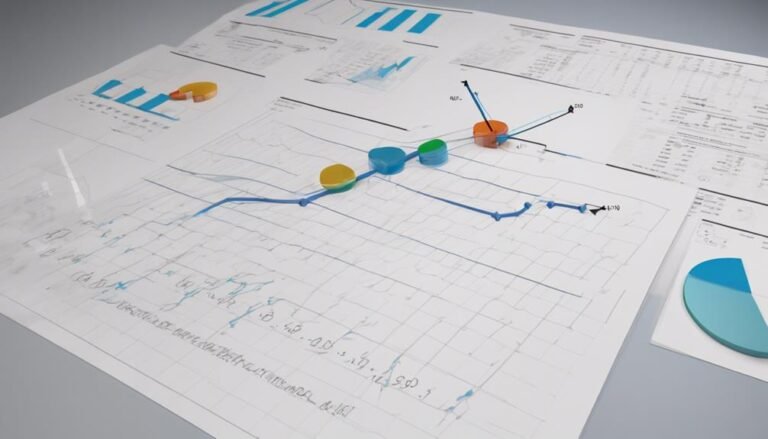Cost of Goods Sold (COGS) Explained With Methods to Calculate It
Understanding Cost of Goods Sold (COGS) is key for evaluating financial performance. Calculated by factoring production costs and inventory valuation, it impacts gross profit directly. Methods like Weighted Average and Specific Identification influence calculations. COGS differs from Cost of Revenue by focusing on production costs, impacting profitability to a large extent. Effective COGS management involves controlling inventory and aligning costs with revenue. Analyzing profitability offers insights into cost structures, important for compliance and transparency. Mastering COGS is essential in financial analysis.
Key Takeaways
- COGS is a crucial accounting metric for determining gross profit and production costs.
- Inventory valuation methods impact COGS calculation and financial performance analysis.
- Different accounting methods such as weighted average and specific identification affect COGS.
- Managing COGS involves efficient inventory management, cost control measures, and profitability analysis.
- COGS is distinct from Cost of Revenue, with COGS directly tied to production costs.
Definition and Importance of COGS
The Cost of Goods Sold (COGS) is a fundamental accounting metric that plays a crucial role in determining a company's gross profit and overall financial performance. Its significance lies in being a direct indicator of the production costs associated with goods sold.
Analyzing COGS involves various techniques such as comparing it with industry benchmarks, tracking trends over time, and evaluating the impact of cost fluctuations on profitability. By understanding the components of COGS and employing proper analysis techniques, businesses can make informed decisions to optimize their production processes, pricing strategies, and overall financial health.
COGS serves as a critical measure for evaluating operational efficiency and profitability, making it an essential aspect of financial analysis for companies across various industries.
Components of COGS Calculation
Analyzing the breakdown of components within the Cost of Goods Sold (COGS) calculation provides insight into the direct production costs associated with goods sold by a company. Key components of COGS calculation include:
- Inventory Valuation: The method used to assign value to ending inventory impacts the calculation of COGS. Common valuation methods include FIFO (First-In-First-Out), LIFO (Last-In-First-Out), and weighted average cost.
- Production Costs: These are the direct costs incurred in manufacturing or acquiring products that are ready for sale. This includes costs of raw materials, direct labor, and manufacturing overhead.
- Cost of Goods Manufactured: This component encompasses all costs incurred to produce goods that are ready for sale, including direct materials, direct labor, and manufacturing overhead.
Various Accounting Methods for COGS
Different accounting methods play a significant role in determining the Cost of Goods Sold (COGS) for a company's financial reporting. Two common methods used to calculate COGS are the weighted average method and the specific identification method.
The weighted average method calculates COGS by averaging the costs of all inventory items available for sale during the accounting period. This method considers both the cost and the quantity of goods available for sale.
On the other hand, the specific identification method involves individually tracking the cost of each item sold. This method is useful when dealing with unique or high-value items where it is essential to match the exact cost of each item to its sale.
COGS Vs. Cost of Revenue Distinction
To distinguish between the direct costs associated with producing goods and the broader costs related to generating revenue, it is essential to understand the clear demarcation between COGS and the overall Cost of Revenue.
- COGS vs. Revenue Recognition: COGS specifically pertains to costs directly tied to production, such as materials and labor, while revenue recognition encompasses the broader costs necessary to earn revenue.
- COGS Impact on Profitability: Fluctuations in COGS directly affect a company's profitability as it impacts the gross profit margin, highlighting the significance of managing these costs efficiently.
- Differentiation: While COGS focuses on costs directly linked to goods sold, the Cost of Revenue encompasses a wider range of expenses essential in generating revenue, including sales commissions and shipping costs.
Managing COGS and Related Concepts
Effectively managing Cost of Goods Sold (COGS) is essential for optimizing a company's profitability and operational efficiency. Inventory management plays an important role in controlling COGS. By efficiently managing inventory levels, companies can reduce carrying costs and minimize the risk of obsolete stock, ultimately impacting profitability positively.
Profitability analysis is key to understanding how COGS affects the bottom line. Monitoring and analyzing COGS trends can provide valuable insights into cost structures and pricing strategies. Cost control measures should be implemented to make sure that COGS remains in line with revenue generation.
Maintaining accuracy in financial reporting regarding COGS is crucial for transparency and compliance with accounting standards. By focusing on inventory management, profitability analysis, cost control, and financial reporting accuracy, companies can enhance their overall performance.
Conclusion
In the intricate web of financial analysis, Cost of Goods Sold (COGS) stands as a beacon of insight into a company's operational efficiency and profitability.
By meticulously calculating COGS through various methods like FIFO, LIFO, and average cost, organizations can reveal vital financial indicators and make informed strategic decisions.
Symbolically, COGS serves as a compass guiding businesses towards optimized resource allocation and sustainable growth in the competitive landscape of the market.







